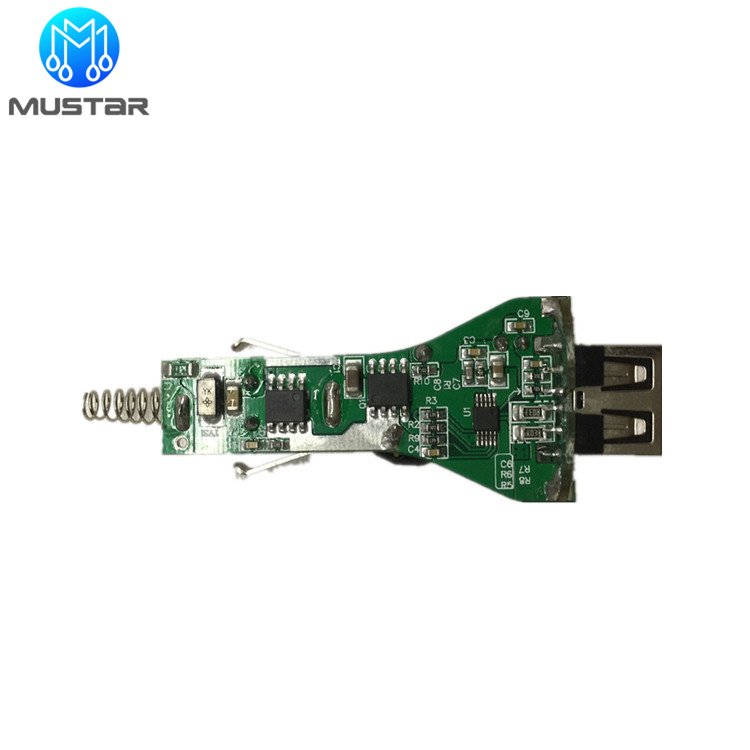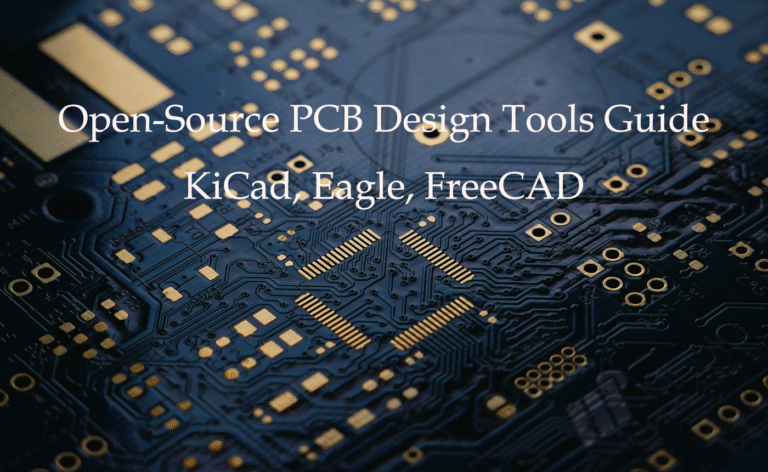🔧 SMT Quick Facts & Key Takeaways
| Aspect | Details |
|---|---|
| Definition | Technology that mounts components directly on PCB surfaces |
| Market Size 2024 | $5.82 billion globally |
| Expected Growth | 9.6% CAGR (2024-2025) |
| Component Size | Up to 75% smaller than through-hole |
| Assembly Speed | 10x faster than traditional methods |
Are you wondering what is SMT and why it’s revolutionizing electronics manufacturing? Surface Mount Technology (SMT) has become the backbone of modern electronics, powering everything from smartphones to medical devices. In fact, over 90% of electronic products today use SMT components.
This comprehensive guide will walk you through everything you need to know about SMT. By the end, you’ll understand how this technology works and why it’s essential for today’s electronic manufacturing.
Contents
What is SMT (Surface Mount Technology)? – Core Definition
Surface Mount Technology (SMT) is an advanced manufacturing method where electronic components are mounted directly onto the surface of printed circuit boards (PCBs). Unlike traditional methods, SMT doesn’t require drilling holes through the PCB.
Here’s how SMT works in simple terms:
- Components sit on top of the PCB surface instead of going through holes
- Automated machines place components with incredible precision
- Solder paste creates permanent connections between components and the board
- Heat treatment solidifies all connections simultaneously
“SMT represents the evolution from manual assembly to automated precision manufacturing, enabling today’s compact and powerful electronic devices.”
The key difference is that SMT components, called Surface Mount Devices (SMDs), have connection points on their bottom surface rather than wire leads that pierce through the PCB.
SMT vs Through-Hole Technology: The Key Differences
Understanding the differences between SMT and Through-Hole Technology (THT) is crucial for anyone involved in electronics manufacturing. Let’s break down these two approaches:
| Feature | SMT (Surface Mount) | THT (Through-Hole) |
|---|---|---|
| Component Size | 75% smaller | Larger footprint |
| Assembly Speed | 10x faster | Manual intensive |
| PCB Sides Used | Both sides | Usually one side |
| Cost Efficiency | Lower per unit | Higher labor costs |
| urability | Good for most applications | Better for high-stress environments |
Why SMT wins in most scenarios: Modern electronics demand smaller, faster, and more cost-effective solutions. SMT delivers on all three fronts, which is why it dominates today’s electronics manufacturing landscape.

SMT components mounted directly on PCB surface showing compact design

Traditional through-hole components with leads piercing PCB
Are All Electronic Components Suitable for SMT?
Not every component is an ideal fit for Surface Mount Technology. While SMT has transformed how most parts are mounted, some bulky or heavy components—like large transformers or high-power connectors—still require the robust mechanical support provided by through-hole technology.
These exceptions usually involve parts that handle significant mechanical stress, heat, or power. For instance, connectors on an industrial control board or hefty relays in automotive systems often stick to through-hole mounting to ensure rock-solid durability.
In most modern circuits, however, you’ll find the vast majority of components are SMT-compatible, with just a few necessary hold-outs reserved for through-hole techniques.
How SMT Works: The Complete Process
The SMT process involves several precisely coordinated steps. Each step is critical for producing reliable, high-quality electronic assemblies:
Step 1: Solder Paste Printing
First, a thin layer of solder paste is applied to the PCB using a stencil. This paste contains tiny solder particles suspended in flux. The stencil ensures paste is only applied where components will be placed.
Step 2: Component Placement
Next, automated pick-and-place machines position components onto the solder paste with incredible precision. These machines can place thousands of components per hour with accuracy measured in micrometers.
The Main Automated Systems in SMT Assembly
To achieve the speed, precision, and consistency that define SMT, manufacturers rely on a suite of high-tech automated systems. Each piece of equipment in this process is designed to optimize a specific stage of assembly, ensuring both quality and efficiency at scales unimaginable in manual production.
Here’s a closer look at the automation that powers modern SMT lines:
-
Pick-and-Place Machines: These are the workhorses of SMT production. Using robotic arms guided by computer vision, pick-and-place machines rapidly and accurately position thousands of tiny components onto the PCB in mere minutes—far outpacing even the steadiest human hand.
-
Stencil Printers: Before placement, automated stencil printers deposit an ultra-precise layer of solder paste onto the PCB. This ensures that the paste lands exactly where it’s needed for each component, setting the stage for strong, reliable connections.
-
Solder Paste Inspection (SPI) Systems: SPI machines use advanced imaging to verify the quality and consistency of the solder paste application. By catching any issues before components are placed, they help reduce costly defects down the line.
-
Automated Optical Inspection (AOI) Systems: After soldering and assembly, AOI systems scan the boards using high-resolution cameras. They inspect for misaligned components, soldering problems, and other assembly errors in seconds—providing a robust first line of quality control.
-
Reflow Ovens: These sophisticated ovens follow precise thermal profiles to melt the solder paste and bond components to the PCB—ensuring every connection reaches just the right temperature for a strong, durable joint.
-
Depaneling Equipment: Once the assembly is complete, automated depaneling machines cleanly separate individual boards from multi-board panels, using methods that minimize stress and prevent damage.
Together, these automated systems make modern SMT production fast, scalable, and impressively reliable—meeting the evolving demands of industries from consumer electronics to aerospace.
Step 3: Reflow Soldering
Then, the entire PCB passes through a reflow oven. The controlled heat profile melts the solder paste, creating permanent electrical and mechanical connections between components and the PCB.
Step 4: Inspection and Testing
Finally, various inspection methods verify assembly quality:
- Automated Optical Inspection (AOI) – Cameras check component placement
- In-Circuit Testing (ICT) – Electrical testing of connections
- Functional Testing – Complete system operation verification
Step 5: Cleaning
Last, flux residues are removed using specialized cleaning processes to ensure long-term reliability and performance.
What Challenges Do Engineers Face with SMT Design and Assembly?
While SMT offers clear advantages, it also brings its own set of engineering challenges. Here’s what designers and manufacturers grapple with most:
Managing Heat in Tight Spaces
As electronics get smaller and more powerful, squeezing more components onto ever-tinier boards causes heat to build up. Without proper attention, this heat can shorten component life or lead to sudden failures. To keep devices running cool and reliably, engineers use techniques like:
- Strategically placing heat sinks and spreading layers within the PCB to draw heat away from critical chips.
- Adding thermal vias—tiny holes filled with conductive material—to move heat through different PCB layers.
- Leveraging thermal interface materials (TIMs) and sometimes even active cooling (think tiny fans or liquid cooling) when power really ramps up.
- Careful layout planning to prevent “hot spots” by keeping power-hungry parts apart.
Precision and Process Control
SMT’s hallmark is high-speed, high-accuracy placement—but this comes at the price of meticulous setup and monitoring. Miniaturized components demand:
- Machines with accuracy down to the micrometer—for example, pick-and-place robots that can align parts within mere microns.
- Stencil printers that deposit solder paste with razor-thin margins for error. Even a small misalignment can spell trouble.
- Reflow ovens tuned to maintain precise, consistent temperatures across the board, preventing damage or weak joints.
- Automated optical inspection (AOI) to catch defects invisible to the naked eye—even those smaller than a human hair.
Cost Considerations: Volume Is Everything
The economics of SMT favor mass production, but there are hurdles on both ends of the spectrum:
- Small runs can be costly, since switching between products or board designs often means stopping the line, making adjustments, and wasting time and materials.
- High-volume production requires hefty upfront investment in cutting-edge, fully automated machinery. However, once up and running, these lines churn out boards at minimal per-unit cost and with less need for manual labor.
So while SMT is fast, efficient, and scalable, getting the best results takes thoughtful thermal management, state-of-the-art precision, and a willingness to invest—especially if you’re aiming for large-scale production.
Why SMT Matters: Top 7 Advantages
SMT technology offers numerous benefits that make it the preferred choice for modern electronics manufacturing:
- Smaller Component Size
SMT components are up to 75% smaller than their through-hole counterparts. This size reduction enables more compact product designs and higher component density on PCBs.
- Faster Assembly Speed
Automated SMT lines can place thousands of components per hour. This speed advantage translates to shorter production times and faster time-to-market for new products.
- Lower Manufacturing Costs
Reduced material usage, faster assembly, and automation lead to significant cost savings. SMT can reduce assembly costs by 40-60% compared to through-hole technology.
- Higher Component Density
SMT allows components to be placed on both sides of the PCB, doubling the available space for circuit elements. This density improvement is crucial for modern compact devices.
- Better Electrical Performance
Shorter connection paths in SMT reduce parasitic effects like inductance and capacitance. This improvement results in better high-frequency performance and signal integrity.
- Enhanced Automation Compatibility
SMT processes are designed for full automation. This compatibility reduces human error, improves consistency, and enables 24/7 production capabilities.
- Superior Reliability
Automated assembly and controlled processes result in more consistent solder joints and fewer manufacturing defects compared to manual assembly methods.
Challenges of Miniaturization in PCB Manufacturing
While SMT has unlocked incredible possibilities for smaller, more powerful electronics, building ever-tinier devices brings its own set of hurdles to overcome:
-
Thermal Management Becomes Tricky: As PCBs get more crowded with miniature components, dissipating heat effectively becomes a major concern. High-performance devices like modern smartphones or NVIDIA graphics cards often require ingenious solutions—think tiny heat sinks, advanced thermal interface materials, or even micro-fans—to keep everything cool.
-
Precision Placement Is Critical: Fitting chips and resistors that can be smaller than a grain of rice onto densely populated boards demands absolute accuracy. Modern pick-and-place machines now rely on state-of-the-art vision systems to handle these tiny parts, but even the slightest misalignment can mean circuit failure.
-
Inspection Gets More Complex: Making sure every solder joint is perfect isn’t as simple as peering through a magnifying glass anymore. Automated Optical Inspection (AOI) and X-ray methods have become essential for spotting defects in increasingly compact assemblies—a step up from traditional visual checks.
-
Material Costs Rise: Miniaturization often requires specialized materials—like low-loss laminates or advanced solder pastes—to ensure both reliability and performance. These enhancements can bump up production costs, especially when working at scale.
Despite these challenges, innovation continues to push the electronics industry forward, making miniaturization not just achievable but practical for a growing range of applications.
Choosing the Right SMT Type for Your Project
Selecting the optimal SMT type isn’t a one-size-fits-all decision—it hinges on several key project factors:
- Circuit Complexity: If your design is densely packed with components or requires maximum functionality in minimal space, double-sided SMT (Type I) or hybrids with through-hole elements (Type II or III) can offer the needed flexibility.
- Component Mix: Integrating larger or legacy through-hole components? Type II and Type III configurations accommodate these, blending surface-mount convenience with traditional parts.
- Budget Goals: For cost-conscious projects, Type I assemblies are often the most economical, thanks to their streamlined, automated workflows. However, more complex assemblies with mixed technologies may introduce higher process complexity and, in turn, increased costs.
- Volume Requirements: Planning for high-volume manufacturing? Automated SMT setups—regardless of type—are built for scale, boosting consistency and efficiency across large production runs.
By carefully weighing these considerations—circuit layout, component selection, cost targets, and intended volume—you can pinpoint the SMT type that aligns best with your product’s performance goals and manufacturing needs.
SMT Applications Across Industries
SMT technology powers electronic devices across virtually every industry. Here are the key sectors where SMT makes the biggest impact:
Consumer Electronics
Smartphones, tablets, laptops, and gaming consoles all rely heavily on SMT. The technology enables these devices to pack powerful functionality into increasingly compact form factors.
Automotive Electronics
Modern vehicles contain dozens of electronic control units (ECUs) built using SMT. From engine management systems to infotainment displays, SMT enables reliable automotive electronics that withstand harsh environments.

Medical Devices

Industrial Automation
Medical Devices
Medical equipment demands the highest reliability standards. SMT enables compact, reliable medical devices like pacemakers, diagnostic equipment, and patient monitoring systems.
Aerospace
These industries require electronics that function reliably in extreme conditions. SMT components undergo rigorous testing and qualification processes for aerospace.
Industrial Automation
Factory automation systems, robotics controllers, and industrial sensors all benefit from SMT’s reliability and compact design. These applications often require extended operational lifespans that SMT technology supports.
According to industry research from Markets and Markets, the automotive electronics segment represents the fastest-growing application area for SMT technology.
SMT Market Trends and Future Growth
The SMT market continues to experience robust growth driven by several key factors. Understanding these trends helps businesses make informed decisions about their electronics manufacturing strategies.
Current Market Statistics
| Metric | 2024 Data | 2025 Forecast |
|---|---|---|
| Global SMT Equipment Market | $5.82 billion | $6.38 billion |
| Annual Growth Rate (CAGR) | 5.2% | 9.6% |
| Asia-Pacific Market Share | 48% | 50% (projected) |
Key Growth Drivers
Several factors are driving the continued expansion of SMT technology:
- 5G Technology Rollout – New 5G infrastructure and devices require advanced SMT capabilities
- Electric Vehicle Growth – EVs contain significantly more electronic components than traditional vehicles
- IoT Device Proliferation – Internet of Things devices demand compact, power-efficient electronics
- Smart Home Technology – Connected home devices drive demand for miniaturized electronics
Emerging Technology Integration
Future SMT development will incorporate cutting-edge technologies:
- Artificial Intelligence – AI-powered quality control and process optimization
- Machine Learning – Predictive maintenance and defect prevention
- Advanced Materials – New substrate materials for specialized applications
Industry analysts from Grand View Research predict that SMT equipment demand will continue growing as electronics become more prevalent in daily life.
Common SMT Terms You Should Know
Understanding SMT terminology is essential for anyone working with surface mount technology. Here are the most important terms explained in simple language:
SMD (Surface Mount Device)
SMD refers to any electronic component designed for surface mounting. These components have connection points on their bottom surface rather than protruding leads.
SMA (Surface Mount Assembly)
SMA describes the complete process of assembling SMT components onto a PCB. This term encompasses the entire manufacturing workflow from paste application to final testing.
SMC (Surface Mount Component)
SMC is another term for surface mount components, often used interchangeably with SMD. These components are specifically designed for automated placement and soldering.
SMP (Surface Mount Package)
SMP refers to the physical packaging format of surface mount components. Common package types include QFN, BGA, and LGA.
Additional Important Terms
- Pick and Place – The automated machine that positions components on the PCB
- Reflow Profile – The temperature curve used during soldering
- Stencil – The template used to apply solder paste
- Tombstoning – A defect where components stand upright due to uneven heating
- BGA (Ball Grid Array) – A package type with solder balls underneath
For more detailed technical definitions, the IPC (Association Connecting Electronics Industries) provides comprehensive standards and terminology guides.
Frequently Asked Questions About SMT
Here are answers to the most common questions about Surface Mount Technology:
What is Surface Mount Technology (SMT)?
SMT is a manufacturing process where electronic components are mounted directly onto the surface of printed circuit boards (PCBs). It uses automated equipment to place and solder components, replacing traditional through-hole technology and improving production efficiency and component density.
What is the difference between SMT and Through-Hole Technology (THT)?
SMT components are smaller, faster to place, suitable for automation, and lower cost with higher component density. THT involves inserting component leads through holes in the PCB and soldering them, which is more complex and slower but better for high-power or heat dissipation components.
What are the main process steps in SMT?
Key SMT steps include solder paste printing, component placement, reflow soldering, cleaning, and inspection. Solder paste printing ensures good solder joints, while reflow soldering solidifies the connection between components and PCB.
What are the advantages of SMT?
SMT offers lower production costs, higher manufacturing speed, smaller component size, higher component density, and better suitability for automation and double-sided mounting. These advantages make it ideal for modern electronics manufacturing.
Can SMT and through-hole components be used together?
Yes, many PCBs use mixed technology assembly, combining both SMT and through-hole components. This approach leverages the benefits of each technology where most appropriate.
What are the future trends of the SMT market?
Driven by 5G, smart home, automotive electronics, and medical devices, the global SMT equipment market is expected to grow steadily, reaching $6.38 billion by 2025 with a CAGR of 9.6%. Future technologies will integrate AI, IoT, and advanced materials.
Is SMT suitable for prototyping?
Absolutely! SMT is excellent for prototyping because it allows rapid design iterations, supports high component density, and enables faster assembly. Many contract manufacturers offer quick-turn SMT prototype services.
How Mustar Delivers Superior SMT Solutions
With over 25 years of experience in PCB assembly, Mustar Company has established itself as a leading provider of high-precision SMT services. Our comprehensive approach to surface mount technology ensures that your electronic products meet the highest quality standards.
Advanced SMT Capabilities
Mustar operates 20 dedicated SMT production lines, including 6 specialized lines for automotive and medical applications. Our state-of-the-art equipment handles components as small as 01005 packages and complex formats like BGA and QFN with exceptional precision.
Quality Assurance Excellence
Our SMT processes incorporate multiple quality control checkpoints:
- 3D SPI (Solder Paste Inspection) – Ensures optimal paste application
- AOI (Automated Optical Inspection) – Verifies component placement accuracy
- 3D X-Ray Inspection – Checks hidden solder joints like BGA connections
- ICT and FCT Testing – Validates electrical functionality
Industry Certifications
Mustar maintains critical industry certifications that ensure SMT assembly quality:
- ISO9001 – Quality management systems
- IATF16949 – Automotive quality standards
- ISO13485 – Medical device quality systems
- IPC Standards – Electronics assembly best practices

5DIP Lines

Specialized Industry Focus
Our SMT expertise spans critical industries requiring the highest reliability standards:
- Automotive Electronics – Over 500 different automotive PCBA types produced
- Medical Devices – Precision assembly for life-critical applications
- Industrial Control – Robust SMT solutions for harsh environments
- New Energy – Power electronics for renewable energy systems
Rapid Prototyping and Volume Production
Whether you need quick prototypes or high-volume production, Mustar’s SMT capabilities scale to meet your requirements. Our fast turnaround times and flexible production scheduling support both development and full-scale manufacturing needs.
Learn more about Mustar’s comprehensive SMT services and how we can support your next electronics project by visiting Mustar official website.
Conclusion: The Future of Electronics Manufacturing with SMT
Surface Mount Technology has fundamentally transformed electronics manufacturing, enabling the compact, powerful devices we rely on daily. From smartphones to electric vehicles, SMT makes modern technology possible through its combination of precision, efficiency, and cost-effectiveness.
As we’ve explored throughout this guide, SMT offers compelling advantages over traditional assembly methods:
- 75% smaller component sizes enabling compact designs
- 10x faster assembly speeds reducing time-to-market
- Lower manufacturing costs improving profitability
- Higher component density maximizing functionality
- Superior automation compatibility ensuring consistency
The SMT market’s projected growth to $6.38 billion by 2025 reflects increasing demand across industries from automotive to medical devices. Emerging technologies like 5G, IoT, and electric vehicles will continue driving SMT adoption and innovation.
For businesses considering SMT for their electronics manufacturing needs, partnering with an experienced provider is crucial for success. The complexity of modern SMT processes requires expertise, advanced equipment, and rigorous quality control systems.
Ready to Leverage SMT Technology for Your Next Project?
Mustar’s 25+ years of SMT expertise and state-of-the-art facilities ensure your electronics meet the highest quality standards while optimizing costs and delivery times.
✓ 20 Advanced SMT Production Lines
✓ ISO9001, IATF16949, ISO13485 Certified
✓ Components as Small as 01005
✓ Automotive & Medical Grade Quality
Contact our SMT experts today to discuss your project requirements and discover how Mustar can accelerate your electronics manufacturing success.
Mustar projects





